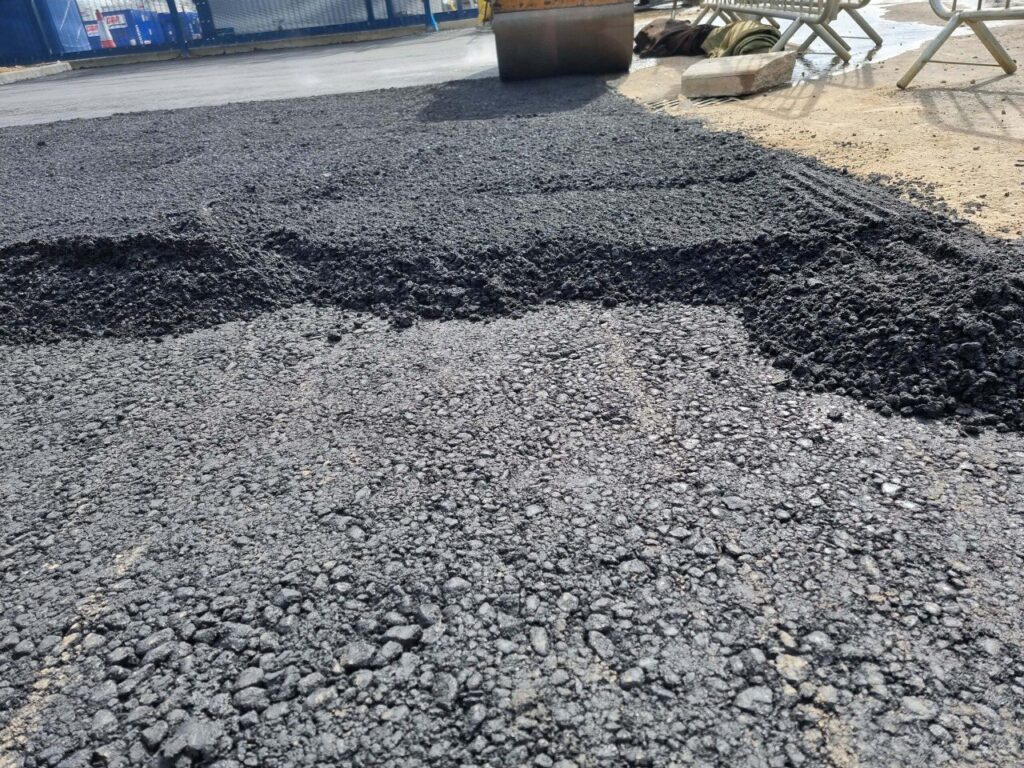Tarmac and Sustainable Transportation: The Shift Towards Electric Vehicle Charging Infrastructure
Introduction: As the world moves towards more sustainable transportation solutions, the integration of electric vehicles (EVs) has gained tremendous momentum. One crucial aspect of this shift is electric vehicle charging infrastructure development. Surprisingly, tarmac, the material commonly associated with road construction, plays a pivotal role in supporting the growth of this infrastructure. In this blog post, we’ll explore the role of tarmac in building EV charging networks and its contribution to sustainable transportation.
- The Electric Vehicle Revolution
Electric vehicles have emerged as a sustainable alternative to traditional gasoline-powered cars, offering several benefits:
Reduced Emissions: EVs produce fewer or zero tailpipe emissions, contributing to cleaner air and reduced greenhouse gas emissions.
Lower Operating Costs: Charging an EV is typically cheaper than refuelling with gasoline, saving drivers money in the long run.
Quiet Operation: EVs are quieter than internal combustion engine vehicles, reducing noise pollution in urban areas.
Energy Efficiency: Electric motors are highly efficient, converting more energy from the grid into vehicle movement.
- The Role of Tarmac in EV Charging Infrastructure
Tarmac plays a vital role in the construction and maintenance of EV charging infrastructure in several ways:
Parking Lot Charging Stations: Many EV charging stations are in parking lots. Tarmac provides a durable and stable surface for these charging stations to be installed and used safely.
Roadside Charging: Some regions are integrating EV charging into the tarmac of roadside parking spaces. Embedded charging plates can be covered with tarmac, allowing drivers to charge their vehicles while parked.
Access Roads to Charging Hubs: Tarmac roads leading to and from charging hubs ensure EV owners can easily access these facilities, promoting their use.
Sustainable Materials: There is a growing trend towards using recycled materials in tarmac production, aligning with the sustainability goals of the EV industry.
- Sustainable Tarmac Practices
Tarmac construction is evolving to align with the sustainability objectives of electric mobility. Some notable practices include:
Recycled Materials: Using recycled asphalt and aggregates in tarmac production reduces the environmental impact and conserves valuable resources.
Low-Energy Manufacturing: Innovations in tarmac production are reducing energy consumption during manufacturing.
Solar Roadways: Some projects explore integrating solar panels into tarmac roadways, generating clean energy while supporting EV charging infrastructure.
Conclusion: Tarmac’s role in supporting electric vehicle charging infrastructure is vital to the global shift towards sustainable transportation. As EV adoption grows, the need for well-maintained, durable tarmac surfaces at charging stations and along transportation routes becomes increasingly evident. At Sittingbourne Driveways, we recognise the importance of tarmac in shaping sustainable transportation networks. We are committed to contributing to developing EV-friendly infrastructure that benefits both the environment and communities.
Call us on: 01795 905 087
Click here to find out more about Sittingbourne Driveways
Click here to complete our contact form and see how we can help with your driveway needs.

